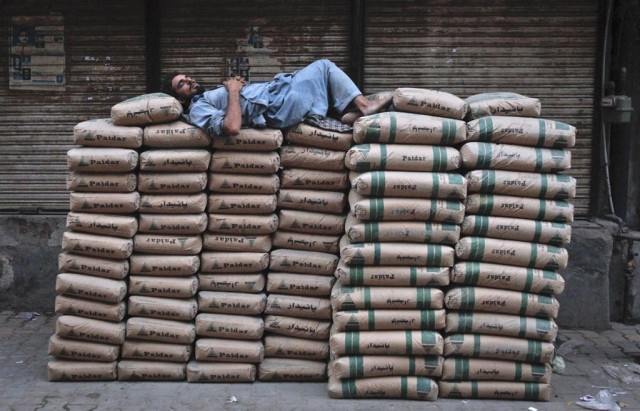Impact of tariff hikes varies for small, big companies
Association appears to have settled differences for the time being.

Cement companies that have no waste heat technology and gas-fired captive power plants are bearing the brunt of power tariff hike compared to those that have such facilities, analysts say. PHOTO: REUTERS/FILE
When the government increased electricity and gas tariffs for industrial or bulk consumers, it did not know how much friction it could cause in the top lobby group of cement manufacturers in the country.
Different tariff increases for electricity and gas consumers widened divisions between big and small players in the lobby group – the All Pakistan Cement Manufacturers Association (APCMA) – comprising 19 members.

Cracks appeared in the association in the first week of August this year when the government announced up to 74% increase in electricity tariffs for bulk consumers. Though the tariff hike disturbed all industrial consumers, it did hurt cement companies the most because of bulk use of electricity in the manufacturing process.
Later, in the third week of the same month, the government increased gas tariffs by 17.4% for gas-powered captive power plants compared to a sharp rise of over 50% for those companies connected to the national electricity grid.

Since most of the 19 cement companies are on the national power grid, their cost of production soared when power tariffs were increased compared to around half a dozen financially stable companies that had installed their own gas-fired captive power plants.
The split among APCMA members widened in the last week of August when some companies published advertisements in newspapers, asking the government to increase gas prices for captive power plants in line with the rise in electricity tariffs so that all companies have a level playing field.
At a time when cement companies were at loggerheads, Lucky Cement – the largest cement manufacturer in the country with 18% market share – threatened to leave the association if it failed to reach a settlement. Investors feared that cracks in the body would lead to a possible price war, but it now seems that the association has settled pricing and other differences at least for the time being.

When contacted, the chief executive of a small cement company, which is connected to the electricity grid, said the government should have increased gas prices in line with the rise in electricity tariffs so that nobody has an undue edge over other.
According to industry officials, cost of production of cement companies that are connected to the grid has increased up to 35% with the rise in power tariffs as per unit electricity cost has jumped from Rs9 to Rs15-16.
On the other side, companies that have gas-powered captive power plants have borne just a 17.4% rise in their bills and their cost per unit has gone up from Rs6 to Rs7.

According to calculations made by Sherman Securities, Lucky, DG Khan, Fauji and Maple Leaf Cement have been least affected by the electricity and gas tariff hikes while Lafarge, Pioneer, Kohat and Attock Cement have been affected the most.
Cement companies that have no waste heat technology and gas-fired captive power plants are bearing the brunt of power tariff hike compared to those that have such facilities, analysts say.

Published in The Express Tribune, October 28th, 2013.
Like Business on Facebook, follow @TribuneBiz on Twitter to stay informed and join in the conversation.



















COMMENTS
Comments are moderated and generally will be posted if they are on-topic and not abusive.
For more information, please see our Comments FAQ